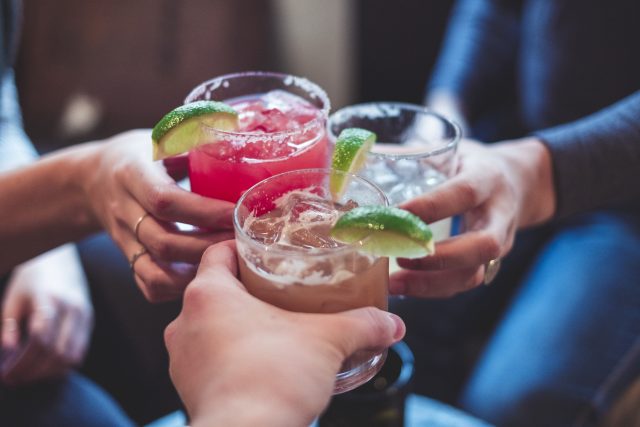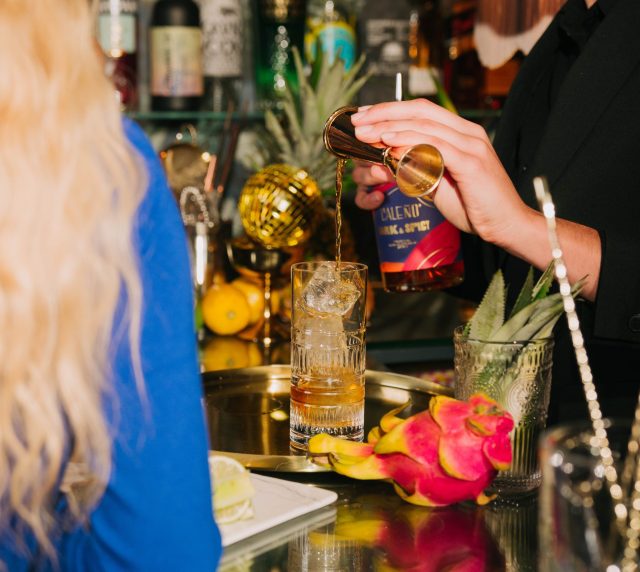What is ‘Damp January’ and does it work?
January is all about resolutions, as a mixture of guilt and optimism fuels many to cut down on the indulgences we enjoyed during Christmas. But while steering clear of alcohol for a month might at first seem like a breeze, many are finding Dry January too restrictive. Enter Dry January’s more lenient cousin: ‘Damp January’.

We’ve all been there. You wake up feeling worse for wear on New Years Day, regretting whatever drinks you were hitting the night before. Come to think of it, you’re starting to regret everything you drunk throughout the Christmas period, vowing never again to chase mulled wine with shots of Baileys. A month of not drinking sounds easy, positively blissful.
But then, suddenly, it’s your best friend’s birthday. Or your uncle’s wedding. Or even just your weekly after-work drinks. Everyone has booze in their hands, and you – struck with overwhelming fear of missing out – reach for a glass too. Before long, you’ve fallen off the wagon, drinking just as much as usual.
According to research, the ‘all or nothing’ approach to alcohol consumption is not sustainable. Sunnyside, a mindful drinking app, reported that 35% of people aiming to take part in Dry January last year had a drink in the first week. And once you slip up, it’s much harder to motivate yourself to carry on.
As well as being difficult to uphold, Dry January can foster a problematic relationship with alcohol.
A temporary ban can demonise booze and lead Dry January participants to view it as ‘bad’. But attaching morality to alcohol actually creates a more intense relationship, making it harder to stay ‘good’ when the month is up. Even for those who manage to last the whole month without tasting a drop, February often turns into a month of bingeing to make up for all that self-restraint.
So what exactly is Damp January and how might it solve this problem?
Essentially, the aim is moderation. Those participating in Damp January reduce their alcohol intake, while still enjoying a few glasses here and there throughout the month. It’s less about total abstinence and more about evaluating your personal relationship with alcohol. Best of all, there’s no way to fail. As long as you adopt a mindful approach to imbibing, you’ve succeeded.
As a result, Damp January means different things to different people, depending on your current drinking habits. After all, the window for ‘moderate drinking‘ is broad, defined as anything up to 14 drinks a week for men, and seven drinks a week for women.
No matter where you fall within the ‘moderate’ range, Damp Jan gives you the option to partake in both non-alcoholic beverages and the occasional full-strength cocktail or glass of wine. Some decide to limit their drinking to just the weekends, nights out, or special occasions. The frequency and amount doesn’t really matter, you just have to be conscious of your limits.
The concept is already taking the online world by storm, with the hashtag #dampjanuary reaching 3 million views on TikTok. But it’s not just confined to social media trends. According to a poll of 1,844 UK Vivino users, only 5% plan to follow Dry January this year, while 27% are exploring the Damp January route.
Gone are the days when ‘alcohol free’ meant boring and uncool. Take, for instance, Caleño, and its founder Ellie Webb. Described as “unapologetically bold, vibrant and joyful”, Caleño is a range of alcohol-free spirits which aim to ‘bring joy to not drinking’. The brand offers two variations: Light & Zesty (a non-alcoholic tropical gin) and Dark & Spicy (a non-alcoholic tropical rum).
Partner Content

“Most of Caleño’s customers are drinkers, who want to cut back or simply moderate their alcohol intake,” Webb tells db. “The idea of making small incremental changes is much more appealing to people than going cold turkey and cutting something out completely. We’re increasingly seeing customers ‘blend’ (switching between no/low and full-strength drinks on the same occasion).”
Bacardi also refers to ‘blending’ in their 2023 trends report, claiming that consumers are “choosing to drink alcoholic and non-alcoholic cocktails at the same occasion, without any social stigma”. The brand believes this will set the stage for an era of no and low alcohol experimentation.
Unsurprisingly, those taking part in Damp January are embracing alternatives like Caleño to avoid missing out on the flavours and fun of alcohol. “In the first 2 weeks after Christmas, our social engagement rose by a staggering 84%,” says Webb. “And our website orders alone sky rocketed by 214% in comparison to last year.”
Beyond seasonal sales booms and January challenges, could a Damp lifestyle be the way forward?
According to experts, moderating your intake can have long-term health benefits and lead to a better overall relationship with alcohol. As a Damp Jan is easier to maintain than a Dry one, your 31 day reflection can turn into a habit. Or even a lifestyle shift.
Regardless of the label you assign to it, resolving to drink moderately and taking a moment to reflect on your habits is definitely a good idea. It might be time to try interspersing your night out with mocktails, or sample a low ABV beer. For further inspiration, check out our list of the best no and low alcohol drinks, and our top 10 no and low alcohol wines.
Read more:
Here’s what happens to your body when you give up alcohol for a month
Non-alcoholic drinks ‘can increase cravings’, says expert
Related news
Carlsberg Hong Kong expands no and low alcohol portfolio




